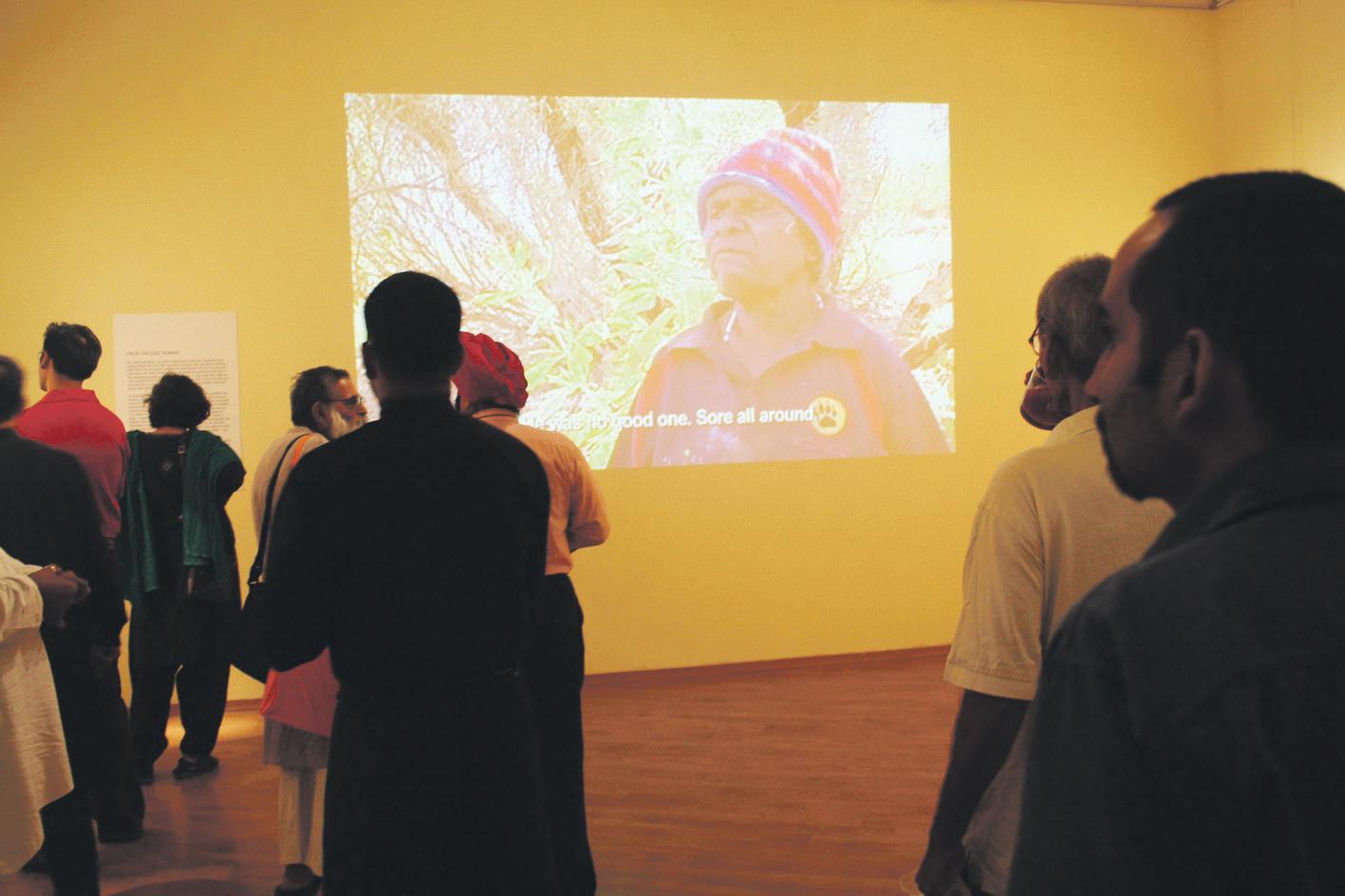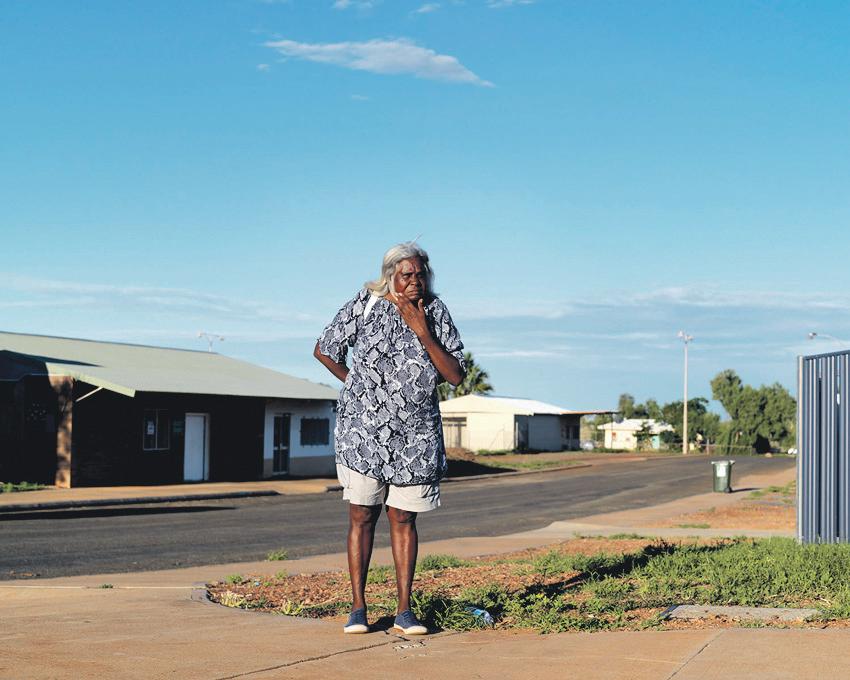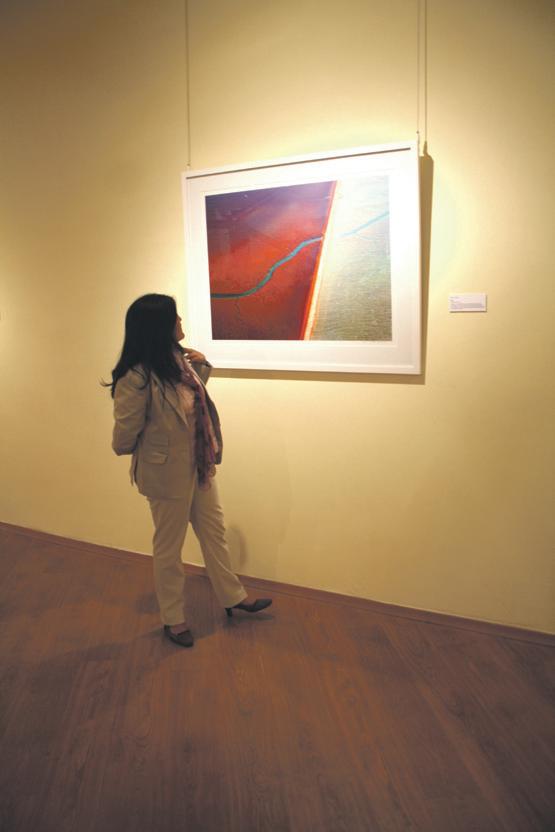
4 minute read
A Pilb ArA exPerience
from 2013-02 Sydney (2)
by Indian Link
Indian artists bring alive their understanding of the people of remote Western Australia at India’s ongoing OzFest cultural festival. ROHANA WOOD reports
On February 8, independent cultural organisation FORM launched its latest exhibition, Pilbara Stories: A new way of knowing the people of the Pilbara. It is the latest exhibition in a series which has seen the works of renowned Indian photographers Bharat Sikka and Ketaki Sheth travel between the remote region in Western Australia’s North West and their home country India.
In October 2012, The Pilbara Project exhibition was part of ‘Oz Fest’, the four-month Australian Cultural Festival in New Delhi. In her opening address at the event, Australian Prime Minister Julia Gillard praised FORM’s participation in the festival. “Tonight, I have the pleasure of opening Oz Fest – my country’s biggest ever cultural festival in your country. We will also feature great works of collaboration between our two peoples… For admirers of physical beauty, The Pilbara Project will display photographs of Australia’s rugged, starkly beautiful northwest region by Australian and Indian photographers….Oz Fest is about bringing Australia’s contemporary character to India in new and fresh ways,” Prime Minister Gillard said.
The Pilbara Project opened at India’s prestigious fine arts institution Lalit Kala Akademi, and was supported by the Australian Government through the Australian Cultural Council, an initiative of the Department of Foreign Affairs and Trade.
The beautiful exhibition represented a deep collaboration between Australian curators and Indian artistic talents which recognised a strong historical and trade relationship of the two different countries.
The important relationship between Western Australia and India is not only at a creative, artistic level. For FORM Curator Monique La Fontaine, it was her first visit to the subcontinent and she found similarities between her home and India.
“There are surprising synchronicities between Australia and India. Both are vast countries with ancient histories and vibrant Indigenous cultures. Both are comprised of sacred landscapes, which reside at the heart of those cultures, and both know relatively little about the other. The opportunity to reveal a small part of Western Australia’s hidden character through the films and photography of Aboriginal, nonIndigenous and visiting Indian artists in the Pilbara Project provided an exciting platform for cultural exchange, and we were constantly surprised by the reactions that this imagery evoked in Indian viewers,” she said.
While in India, Ms La Fontaine and Sharmila Wood, also a FORM curator, participated in presentations at education institutions and engaged in dialogues about contemporary art. Both curators addressed student, faculty and prominent members of the arts community at Amity University about The Pilbara Project and FORM’s relationship with the region.
They also participated in the Craft Revival Trust series, Putting Ideas First. The series is designed to generate and encourage discussion on intangible cultures, livelihood and policy. Photographs from the Canning Stock Route Project were part of The Pilbara Project on display in India, and resonated with the viewers and the audience.
“Photography and films from the Canning Stock Route Project, for example, which documented Western Australian Aboriginal artists at work on the luminous, multicoloured canvases that depict the sacred stories of their country in the Pilbara and beyond, were compelling for viewers when shown as part of The Pilbara Project exhibition at the Lalit Kala Akademi in New Delhi, and in presentations at the Craft Revival Trust and at Amity and Ambedkar universities,”
Ms La Fontaine said. “In rural Rajasthan, however, amongst the working poor at the Social Work and Research Centre or ‘Barefoot College’, these photos and films of Aboriginal artists and cultural leaders, although equally fascinating for young and old viewers, were instantly less exotic, more mirrored. Almost like a memory of having crossed familiar distances”.
FORM’s latest launch, Pilbara
Stories is a natural extension of the creative relationship fostered between FORM and Indian artists, cultural organisations and education institutions.
Pilbara Stories is part of The Pilbara Project, a FORM initiative which is proudly supported by Principal Partner BHP Billiton. The project focuses on community and encourages people to celebrate the region, their own identity and story through visual arts.
The partnership between BHP Billiton and FORM shares a common goal, to assist and encourage communities to prosper in all areas, whether in health and education or culture and the arts. For nine years BHP Billiton and FORM have worked to invigorate, inspire and empower Pilbara communities through strong cultural programs that allow people to find their own voice. Pilbara Stories has provided an avenue for the community to share their distinctive region, sense of place and cultural identity.
The exhibition is the result of trips undertaken to the region by visiting international photographers from India, The Netherlands and the United Kingdom, and an Australian photographer.
It aims to tell the incredible stories of everyday people living in the town of Port Hedland and its surrounds. Pilbara Stories features over one hundred portraits that reflect the diverse heritages, personal stories and experience of everyday life in the Pilbara, a region that has over fifty two different nationalities.
Bharat Sikka’s works were first showcased as part of FORM’s exhibition at Oz Fest. They will now be launched as part of the Perth installation of Pilbara Stories The respected photographer who studied at the Parson’s School of Design has exhibited across continents and found the Pilbara and its people inspired.
“When I take pictures I try to project the way I see things, and I found the Pilbara to be an extremely interesting space that intrigued me a great deal”, he said. “There were many people who seemed to be searching for something intangible and others who were longing for a new life like the different migrants in the region, or the old prospectors drive by the desire to find gold”.
For Mr Sikka the journey from New Delhi, a bustling metropolis of some forty million people, to the remote town of Port Headland which has a population of less than twenty thousand, was an eye-opening and unexpected experience.
“Even the popularity and presence of so many Chinese restaurants was something I hadn’t expected,” he said. “I was able to meet a lot of Aboriginal people through Sharmila and I felt an inexplicable connect with them, it was something I’ve never experienced before. Many of the people I met were surprised that I had come all the way from India and in some ways it was very emotional. I felt that this was a place where I could return again and again”.
Much like Bharat Sikka himself, his photographs and documented stories will have travelled from New Delhi to Perth completing the journey that was started in the Pilbara in March 2012.
FORM hopes to continue the relationship with India and foster artistic growth and cultural ties between the two regions.
Right: FORM curator Monique La Fontaine at Lalit Kala Akademi
The opportunity to reveal a small part of Western Australia’s hidden character through the films and photography of Aboriginal, nonIndigenous and visiting Indian artists in the Pilbara Project provided an exciting platform for cultural exchange.

Monique La Fontaine
Below: Visitors view the exhibition at Lalit Kala Akademi, New Delhi











